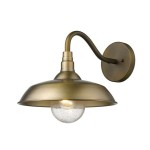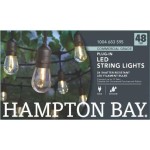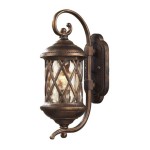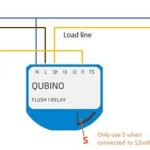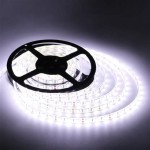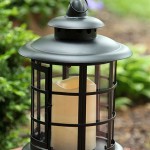Outdoor Restaurant Lighting Design
Outdoor restaurant lighting design holds immense power to shape a restaurant's ambiance, enhance its aesthetic appeal, and create a memorable dining experience for guests. Effective lighting transforms an outdoor space from a mere dining area into an inviting and engaging destination. Properly executed outdoor lighting design considers various factors, including the restaurant's style, the desired atmosphere, and the surrounding environment. The goal is to create a harmonious balance of light and shadow, highlighting key architectural features while ensuring optimal visibility for patrons and staff alike.
Key Considerations in Outdoor Restaurant Lighting Design
Successful outdoor restaurant lighting design requires careful consideration of several key factors. These factors work in tandem to create a cohesive and impactful lighting scheme that enhances the overall dining experience.
1. Ambiance and Atmosphere
Ambiance and atmosphere are paramount in outdoor restaurant lighting design. Restaurants aim to create a specific mood and experience for their guests, and lighting plays a crucial role in achieving this. For instance, a romantic restaurant might opt for warm, soft lighting to create an intimate atmosphere, while a lively bar might utilize vibrant, colorful lighting to generate a more energetic feel. The type of lighting used, the color temperature, and the light distribution can all influence the ambiance. Warm white light with lower kelvin ratings (2700K to 3000K) is often preferred for creating a cozy and inviting feel, while cool white light with higher kelvin ratings (4000K to 6000K) tends to be more stimulating and energizing.
2. Functionality and Visibility
While ambiance is important, functionality and visibility cannot be overlooked. Adequate lighting is essential for ensuring safety and convenience for both guests and staff. This involves providing sufficient light for navigating the outdoor space, clearly illuminating walkways, stairs, and other potential hazards. Lighting should also enable staff to perform their tasks efficiently, such as taking orders, serving food, and clearing tables. When designing for functionality, the task lighting should be positioned to provide focused light on the areas where it is needed most, without creating glare or discomfort.
3. Aesthetics and Architectural Features
Outdoor lighting design extends beyond practicality; it should also enhance the restaurant's aesthetics and architectural features. This might involve highlighting the building's façade, illuminating landscaping, or accentuating specific design elements. Downlighting, for example, can be employed to highlight architectural details, while uplighting can be used to create a dramatic and eye-catching effect. Lighting can also be used to create visual interest in the surrounding garden or landscape by illuminating plants, trees, and other natural elements. Proper illumination can create a captivating visual experience, enhancing the overall appeal of the outdoor space.
Lighting Techniques for Enhancing Outdoor Restaurants
Several lighting techniques are commonly utilized in outdoor restaurant lighting design. Each technique offers unique benefits and can be combined to create a well-rounded and versatile lighting scheme.
1. Layered Lighting
Layered lighting involves using multiple layers of light to create depth and dimension in the outdoor space. This technique typically combines ambient lighting, task lighting, and accent lighting. Ambient lighting provides general illumination and sets the overall tone, task lighting provides focused light for specific functions, and accent lighting highlights architectural features or landscape elements. Layered lighting ensures that every area of the space is adequately illuminated while simultaneously adding visual interest and depth.
2. Uplighting
Uplighting involves directing light upwards towards architectural elements, trees, or other objects. This technique creates a dramatic and eye-catching effect, often used to highlight the height and grandeur of structures. Uplighting can also be used to create a sense of mystery and intrigue by casting shadows and creating a dramatic contrast. However, it's essential to consider the impact of uplighting on the surrounding environment and ensure it doesn't create glare or light pollution.
3. Downlighting
Downlighting involves directing light downwards from overhead fixtures. This technique is often used to provide general illumination and create a sense of warmth and intimacy. Downlighting can also be used to highlight specific features, such as tables or walkways. Downlighting can be achieved using various fixtures, such as pendant lights, track lighting, and recessed lights. The choice of fixture will depend on the desired aesthetic and the size and shape of the outdoor space.
4. Wallwashing
Wallwashing involves using light to evenly illuminate a wall surface. This technique is often used to highlight textured walls or create a sense of spaciousness. Wallwashing can be achieved using various fixtures, such as linear lights, LED strips, and floodlights. The choice of fixture will depend on the size of the wall, the desired effect, and the overall architectural style of the restaurant.
5. String Lights
String lights have gained immense popularity for their versatility and ability to create a charming and festive ambiance. They can be hung overhead, draped across trees, or wrapped around structures to create a warm and inviting glow. String lights are available in various colors and styles, allowing for customization and personalization to suit the restaurant's aesthetic. String lights are particularly well-suited for creating a romantic and intimate setting, especially in the evening.
6. Path Lighting
Path lighting is essential for ensuring safe and convenient navigation in outdoor spaces. Path lights are typically installed along walkways, stairs, and other pedestrian areas to provide adequate illumination and prevent accidents. Path lights are available in various styles, from traditional lanterns to modern LED fixtures. The choice of fixture will depend on the overall design aesthetic and the specific needs of the space.
Outdoor restaurant lighting design requires a blend of practicality, aesthetics, and creativity. By carefully considering the factors outlined above, restaurant owners and designers can create a lighting scheme that enhances the dining experience, attracts customers, and contributes to the restaurant's overall success.

21 Outdoor Lighting Ideas For Restaurants Solutions

Besha Rodell Enchanted By Terrine S Kitchen Talent And Service Restaurant Patio Outdoor Design

Extra Outdoor Lighting From Jacksonville Perspectives Can Increase Clientele

Everything You Need To Know About Outdoor Lighting

Market Lights For Outdoor Seating Area Restaurant Lighting Design Exterior

10 Tips For Creating Outdoor Restaurant Lighting Design

5 Design Tips For Your Restuarant S Outdoor Seating Area

11 Best Cafe Lighting Design Ideas For Outdoor And Indoors

Create Ambiance On Your Patio After Dark With Outdoor Lighting Ions

Low Budget Outdoor Restaurant Design Stunningly Designs


